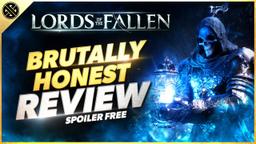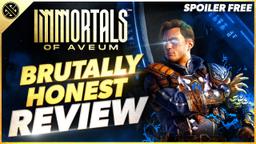Sons of the Forest
Written by - Codiak
Updated: June 21, 2023
|
Posted: February 26, 2023

Now first let me say this, I’m a huge chicken, like a massive, doesn’t want to go into the dark, doesn’t want to dive underwater type of chicken. Jump scares are the bane of my existence so I was hesitant to even play this game. Luckily my compadres on the channel Livid and Shmo were riding shotgun and straight off the bat that cuts down the anxiety by like 10-fold. In ‘Sons of the Forest’ you can host up to 8 people in a player-hosted server which means plenty of friends to watch your back.
Even still we found ourselves diving into dark caves, and creeping around at night, and I’ll be honest the horror factor wasn’t as stark as I thought it would be. Sure, there are creepy things, and they’ll attack you, but often times you know it’s coming. This isn’t a Resident Evil game where things are lying in wait and the developers have coded that perfect jump-scare. I, for one, found myself exhaling because I quickly got over the scare-factor often associated with this game, and moving forward, could focus on the systems.
A ROUGH LANDING
Almost immediately you meet Kelvin, a mute survivor of the crash and a simple laborer that will follow you around and do your bidding. I don’t know why it’s taken so many years before a survival game implemented a system like this, because it’s brilliant. Kelvin can handle basic tasks like chopping down trees, collecting sticks and getting fish. By using a simple menu, you can designate what he does and where he drops his haul and I found this to be one of the most innovative things about the game. Instead of cutting down trees the entire day, which I’ll always admit is a cathartic experience, I could now reliably trust Kelvin to also get that job done which freed me, and the team up to do other things such as build our base and explore. I can’t understate how incredible this NPC system is, which makes it even more gut-wrenching when at the drop of a hat it can all be ripped away.

Yes, my friends, Kelvin can die, and once he’s dead that’s it, your lovable NPC is just a memory on this lonely, remote island. Once I realized Kelvin was gone for good, I was actually pretty upset, mainly because if you die in the game you simply respawn with literally no consequences, at least on the normal difficulty. If Kelvin dies, nope, see you never, he’s not coming back. For a system that’s so crucial to the enjoyment of the game to be ripped away is just awful. Hopefully the developers change course here, especially on any difficulties below hard, because at this point my relationship with ‘son of the forest’ changed.
GATHERING AND BUILDING
With Kelvin gone we had to manage our time a little differently, less time could be spent exploring and more intention had to be put in to resource gathering and base building to ensure survival. On the gathering side things feel familiar and decently immersive. Something as simple as chopping down a tree which has been done a million times at this point, feels fresh thanks to the visual cues and dynamic chopping that accompanies the process. There are also nuanced interactions between systems like using a river to move logs down-stream. It’s a clever idea, one I’ve never actually seen utilized before.
As far as the base-building goes it’s an interesting system that I find to be one of the more believable approaches to something so iconic in the survival genre. Here as well there are nuances that take something simple like a log and utilizing it in multiple ways in construction. Logs can be cut in half to form short logs or split down the middle to create planks. It takes something simple and uses it to do something more complex, which adds a nice layer of depth to the system. There also seems to be a good amount of freedom with the building, giving players the ability to manipulate most things in a way that works for them, which is a nice departure from some of the rigidity that accompanies a lot of these survival base-building systems.

Once we understood the concept of the base-building we also found that enjoyable. There are pre-fabs which you can select from your field guide and place into the world. However, they’re not complete until you supply the blueprint with the necessary resources.
If you flip modes that same field guide will teach you how to create things outside of pre-fabs, which is interesting, albeit frustrating at first. One of my biggest complaints about ‘Sons of the Forest’ is how murky all of the directions are, and I get it, that’s kind of the point, while a real-world survival guide would come with explicit instructions how to do something, the devs had to remove some of those elements to provide puzzle-like problems for you as a player to solve. For an early access game, the ingredients are all there, and once you figure out how to translate the guide it comes together rather quickly.
At some point we did hit a wall in our building. After about 10 hours it felt like we had kind of created what we wanted to create to survive, and the depth of prefabs and gameplay affecting things you can implement as part of the base building system we had tapped out. To be fair there was more we could create, but the threat of attack didn’t merit sinking countless resources into a bigger and more elaborate base. Again, early access so we give the team a little flexibility, but this is a system that will need to be expanded in the future.
EXPLORATION
With livid holding down the base it was time to explore, but which direction to go? Unfortunately, we have no idea since the modern-day GPS map device doesn’t have cardinal directions. What it does have, however, are various points of interest. At first there was no rhyme or reason behind our discovery, we just followed our nose to whatever “thing” interested us. Luckily, we built our base close to one of the purple markers. Sadly, that marker was in the middle of the ocean. After a brief encounter with a very angry shark, we figured out that these trackers are tied to other victims of the crash. That purple indicator is a GPS tracker that you can use as a sort of marker in the world, flipping it to whatever indicator you want to remember something by. The weird thing is there’s virtually nothing that would make me want to use these in their current state.

This is one of my biggest gripes of the game. You have all this technology baked into real world GPS devices, yet in game this supposedly perfect navigation device doesn’t have a compass or the ability to place waypoints or makers. It seems the devs ripped these systems apart to artificially create unnecessary layers to the gameplay. This would have been a more plausible situation if say, the device was partially damaged, or had some other visual limitations. But it appears fully functional, just a super simple and almost meaningless device. It’s something that was far more limiting and was the focus of my frustration way more than it needed to be.
With one beacon in hand, and a newly discovered pistol, we set out for our next adventure, which so happens to be half way across the map. That’s one thing worth pointing out, the map and the world feels massive. Visually it’s gorgeous and the dense foliage and introduction of wind and seasons make the world feel alive, but the sparsity of stuff to discover was a bit of a letdown. This is especially true once winter rolls around and resources become sparse. You’re forced to plan as you can’t rely on the land to supply what you need.
As you’re running around the island, you’ll stumble across cannibal camps. Sometimes they’re filled with one enemy, other times a whole host of enemies, but it’s the simple act of finding *something within the world that’s most exciting.
If the map had been about 75% the size it is currently, I think it would have felt perfect. Right now, you spend a lot of time running across the world, and at some point you just end up b-lining it from point-a to point-b without worrying about camps and such because if you do, you’ll never actually end up tackling your objective, which are often tied to progression.

After connecting a few dots, we realized we needed access to a few different tools to move forward in the game, and while I won’t spoil that for you, it was clear that the various caves dotted around the island were the key. The caves were dark and murky, as you’d expect, but also filled with our first taste of the mutated enemies. These caves provided the most challenge from a combat sense, mainly because we didn’t have our base to protect us, but it did become a bit exhausting after a while. You run through a largely empty cave, come into a room, and have to fight 10 enemies. Run through some more, oh wait…another room with 10 enemies. Even with two of us using a stun baton and axe to keep enemies locked down it was a pain, and we died more than a few times. It was clear these caves were the key to moving forward, but also one of the biggest chokepoints in terms of progression simply because of the combat scenario.
COMBAT AND SURVIVAL
This really ties into the last brutally honest impression I have about the game, the combat and survival elements. First let’s talk combat. It’s decent, but I wouldn’t say revolutionary. From the player side of things, I never found anything to be overly satisfying. Swinging the base axe is probably the best from a physics and satisfaction point of view, but as soon as you branch out to things like the spear, pistol, and stun baton, it gets a little less impressive. Everything works, more or less, but it’s not a memorable combat experience and that’s largely because of the lack of impact behind each of your attacks.
On the flip side I will say enemy AI is ok, but far from the “next level” experience the developers touted ahead of launch. There are some really interesting mannerisms where cannibals will jump on stumps and sort of taunt you, but there are also enemies that don’t seem to have that same level of complexity and just sort of amble about. Whether it’s cannibals or mutants, enemies seem to fall into the same camp, either complex and interesting or plain and forgettable.

Enemies do seem to have a sort of ‘intent’ to them. One day a cannibal will simply wander into your camp, seemingly motivated to steal your hard gathered wood, and the next day they’re here for blood. It’s a neat duality to mob types to keep you guessing as to what their next move may be. Overall enemy design is hit or miss and something the team can address as development continues.
In terms of the survival aspect of the game, you know, hunger, thirst and energy, I did feel like the system was something we had to constantly pay attention to, which became a bit of a chore. Luckily filling those meters back up is simple with food and drink almost always available, especially if you choose to explore and scavenge some cannibal camps.
What I didn’t really like was the lack of ways to provide a pipeline to those necessary resources right from your base. For example, growing items takes forever and doesn’t provide a lot of sustainability, especially when playing with others. Likewise, the traps, both fish and small critter, are frustrating to use and even with intense trial and error it never seemed like a system we could perfect. Ultimately, we just relied on Kelvin to get us fish from the river, or scarfed down a billion energy bars that we found throughout the world.
What I absolutely loved, once I warmed up to it, was the inventory and crafting system. When you open up your inventory at first, you’re so overwhelmed with how different it looks. It’s like a legitimate survival mat with all your items strewn about, and at first glance it’s a bit much. However, once you get your bearings, I found this to be one of the cooler ways to deal with a survival inventory. I could visually see my items, they weren’t just an icon floating in some snappy UI, and that matters because crafting, right from your inventory, requires you to pull together items from your mat, bring them to the center, and combine them. Overall, I really enjoyed this system and hope the team continues to expand the items players can make because it’s quite a satisfying experience.
CONCLUSION
So, being brutally honest for a second, ‘Son of the Forest’ is already off to a great start. It absolutely scratches that survival game itch that our team has been having for quite some time. I think the early access tag bought the team a little wiggle room, because there are aspects of the game that don’t feel quite right, like the story, which is almost non-existent at this point. Other things like the massive open world and lack of stuff in that world also miss the mark. There are plenty of high points from the gathering and crafting to Kelvin the lovable NPC, to the base building, and while those systems haven’t hit their fullest potential, there is more than enough there to sink your teeth into.
While not a full review of the game I would say ‘Sons of the Forest’ is already in great shape, and if you like survival games with a hint of a horror element thrown in, you’re going to really enjoy this experience. Add in a couple of friends and it takes the entire game to a different level.






